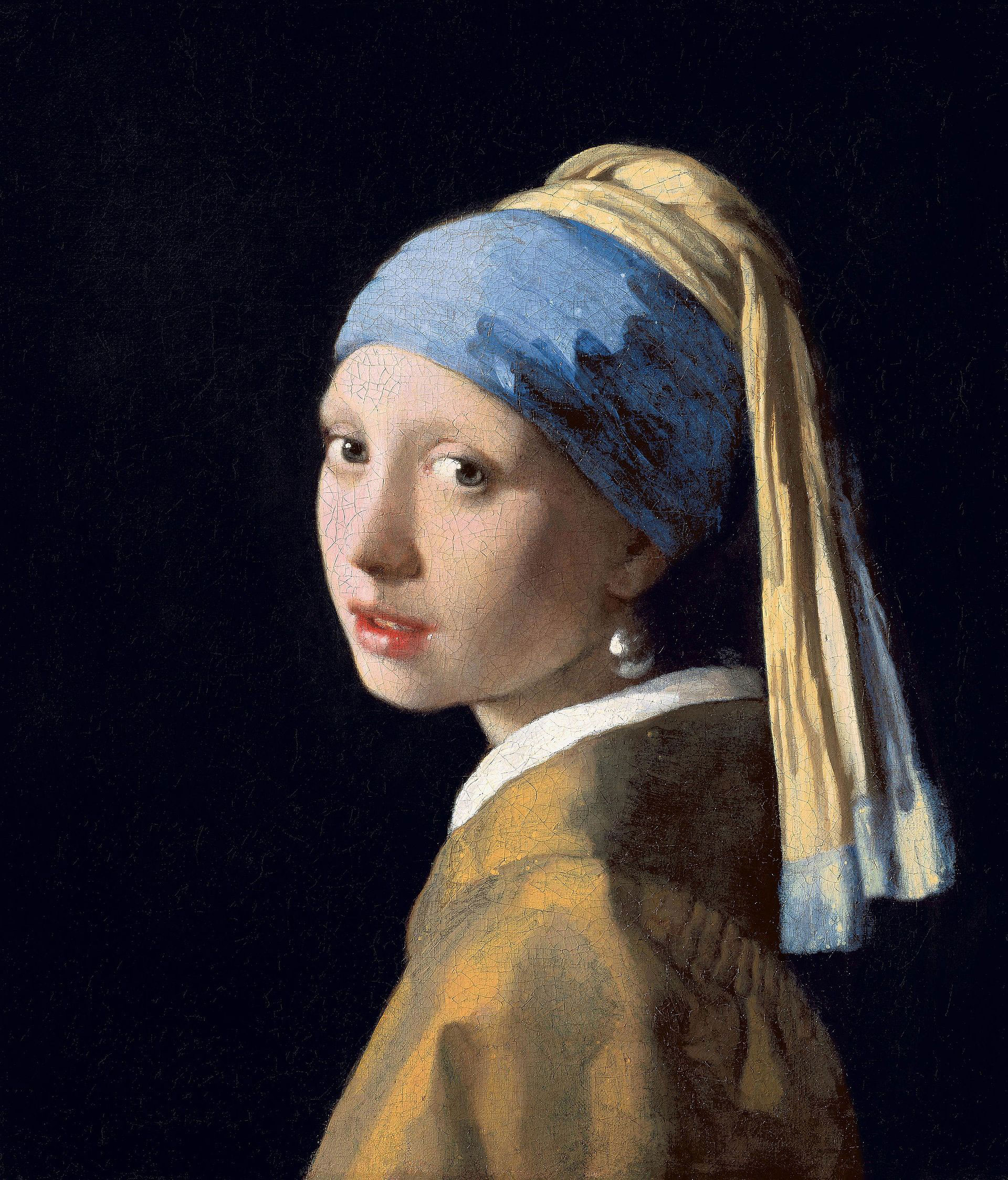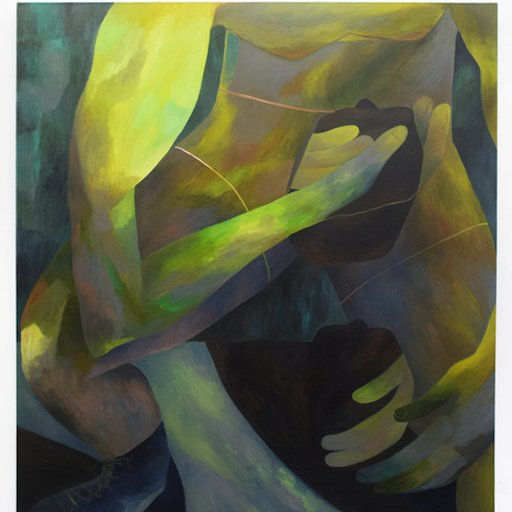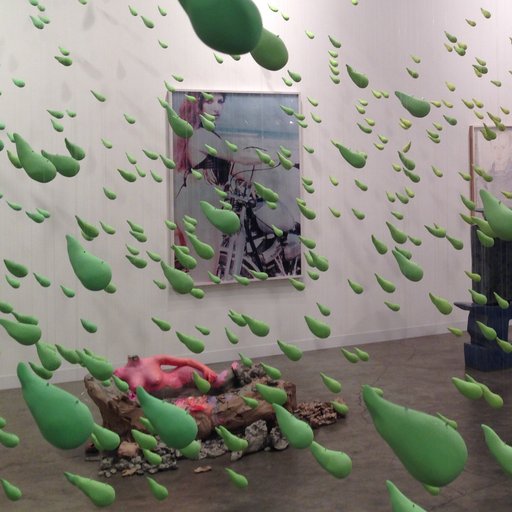Gerhard Richter ’s latest retrospective will open at New York’s Met Breuer on March 4th. Devoted to one of the greatest artists of our time, Gerhard Richter: Painting After All will consider Richter 's six-decade-long preoccupation with the dual means of representation and abstraction to explore the material, conceptual and historical implications of painting. Spanning the entirety of Richter 's prolific and innovative career, the exhibition will present over one hundred works that focus on his specific commitment to the medium, as well as his related interests in photography, digital reproduction, and sculpture.
In our inaugural 'Anatomy of An Artwork' column, a series in which we spotlight a single piece of art from a major forthcoming exhibition, we’ll do a deep dive on 'Betty, 1977', a haunting Richter classic. When you've read it, check out our Artspace-exclusive gallery of this legendary artist’s work, available now for you to buy.
The Western painting canon has a history of doing wrong by little girls, as does the broader culture to which those paintings, and those girls, belong. It wasn’t until the late European Renaissance that childhood was considered a developmental stage rather than a logistical inconvenience; kids were no longer “unfinished adults”, depicted in mercenary religious iconography as truncated despots or not at all, but the sacred promise of a shiny new mercantile class, eager to secure and validate their legacies. 17th and 18th century Protestant artists, short on lucrative Catholic patronage, gravitated towards more modest, domestic subject matter, a trend that intersected with public appetite for human rights allegories. The Industrial Revolution’s rampant child labor exploitation ran tandem with a rosy “Age of Innocence” trope, which might explain that cloying 19th century fetish for portraits of red-cheeked 10-year olds on farms—rural childhood looked like a vacation compared to the cramped tenements and smokey factories city dwellers knew too well.
 Jean-Baptiste Greuze - A Girl With A Dead Canary, 1765
Jean-Baptiste Greuze - A Girl With A Dead Canary, 1765
Still, depictions of interiority were mostly reserved for boys, and rich ones, at that. A sidelong glance down art history’s annals mostly unearths well-composed studies in girlhood misery—the Infanta Maria Theresa’s palpable discomfort in her 1653 portrait by Velazquez, the green-tinged, anonymous melodrama of Jean-Baptiste Greuze’s A Girl with a Dead Canary (1765), or Edward Darley Boit’s daughters, shrouded in darkness, returning Sargent’s searching stare (1882).
Renoir couldn’t hide Little Irene’s trepidation with his treacly, lingering brushwork, (1880), and Vermeer’s Girl With A Pearl Earring has too long endured gross miscategorization as a grown-up; she looks like a kid, and that kid looks scared.
Female pre-pubescence remains its own special form of purgatory to this day, but it wasn’t until the last fifty years that girlhood could be considered anything other than a too-short queue outside of biologically determined oppression, a mandated transition from symbolic purity into literal property.

Diego Velázquez - Portrait of the Infanta Maria Theresa of Spain, 1653
By the onset of the 20th century, the turgid, psychosexual grey space endemic to real-life girl-dom started to manifest in the painting sphere, but typically at the subject’s expense—think Balthus and Egon Schiele , who revelled in their own stylistic predation, or even Alice Neel , whose wincingly awkward depictions of her daughters hit almost too close to home in situ. This is to say nothing of kids who weren’t considered worthy of protection by Eurocentric standards, like the wide-eyed Tahitian pre-teens immortalized by Paul Gauguin’s untrammeled scopophilia.
That’s why it’s notable art’s ultimate anti-humanist, Gerhard Richter , created the most psychologically charged, emotionally respectful, and artistically innovative image of a girl-child on record, Betty, 1977, completed in 1988. This hardly foot-high portrait of Richter 's daughter is not the fatherly tribute for which he is best known, however; that’s Betty, a larger piece from the same year that depicts his 11 year-old turning away from the viewer towards an ambiguous expanse of sterile hunter green.

Johannes Vermeer - Girl With A Pearl Earring, 1665
Richter ’s slavish attention to the texture of her hair and it’s attendant lens-flare halo is less adoring than technical, in keeping with the painstakingly postmodern tone of his oeuvre. Richter , part of the “fatherless” generation of Germans ashamed and troubled by their disgraced Nazi parentage, notoriously eschewed all ideologies or agendas in his work, declaring in his published Notes from 1964, “I like everything that has no style, because style is violence, and I am not violent”.
Instead, Richter preferred the “anti-sensibility” espoused by Emmanuel Kant, who insisted that humans can never know “things in themselves”, but only as they experientially appear. Richter ’s relationship with photography was less concerned with nostalgia, commentary, or convenience than the archive’s bittersweet caprice, and by the late ‘60s, his distaste for cleaving abstraction from representation grew even more explicit; “I blur things,” Richter wrote, “in order to make everything equally important and equally unimportant”.
For him, photorealism has long been a project of rupture, the kind of performative desecration that served to uphold its own site of defacement. His faceless Betty is as much a testament to the “thingness” of painting as it is to interpersonal ephemerality, and the painting’s status in the canon reflects Richter ’s full-bodied embrace of the contradictions that made him famous. Betty is a picture of a picture. Betty, 1977, on the other hand, is a picture of a girl.
 Gerhard Richter - Betty, 1988
Gerhard Richter - Betty, 1988
In a mid-60s interview, Richter quipped, “a portrait can never come closer to the sitter than when it is a very good likeness. For this reason, among others, it is far better to paint a portrait from a photograph”. Before Richter ’s late career pivot to procedural abstraction, this flavor of contrarian obfuscation defined his brand—he never actually made portraits in good faith.
Instead, he used snapshots as the vehicle for artistic “analogies”, his own version for what Walter Benjamin termed “dialectical images”, those ineffable, pesky fragments that comprised the mosaic of history. Both Betty paintings featured in his 80’s “history” series, an endeavor free from an of Benjamin’s progressive optimism. “For Richter”, writes art historian Kaja Silver in Flesh of My Flesh, the cover of which sports Betty, 1977, “mortality constitutes the basis of human existence”.
Richter ’s hard-won morbidity lends a queasy psychic thickness to Betty, a sallow, rich, and frank study in affectual misalignment. The composition achieves intimacy through radical awkwardness; Betty lies on a table and tilts her head sideways, watching her photographer with slack-jawed insouciance. Richter ’s reference photo crops closely on Betty’s face and neck and assumes a hovering angle, further abstrusing her personhood through horizontal orientation. For a 10-year old, she looks tired, comfortable, but serious, nearly reduced to a planar exercise in line and light if not for the tender trails of shadow in her hair or blooming earlobe blush.
 Gerhard Richter - Betty, 1977
Gerhard Richter - Betty, 1977
The contrast between her vermillion sweater and overexposed, white skin evokes too many mythologies to count—Sleeping Beauty, Snow White, even Lilith. Betty’s delicate features belie a powerful insistence on being seen, not just beheld. Richter has pronounced her under-eyes with a cobalt glaze, simultaneously reminding viewers of the photographic conditions he won’t allow us to escape and the fugitive nature of childhood itself. Betty doesn’t gaze at us, but at her Dad, her creator in life and art.
The piece is small, almost cramped, and glows like a reliquary. Betty looks agential, weird, and honored. This is a forceful child, a girl poised to say something, a kid who is invested in the stakes of her likeness. There’s no ingénue or cherub in this painting. If Richter ’s career has disrupted the methodology of looking, Betty, 1977 does one better; it inspires both a rumination on the very concept of art practice all while doing right by a little girl .
Gerhard Richter: Painting After All opens at New York's Met Breuer on March 4. Look out for our next Anatomy of an Artwork story coming soon.
[Richter-module]
























